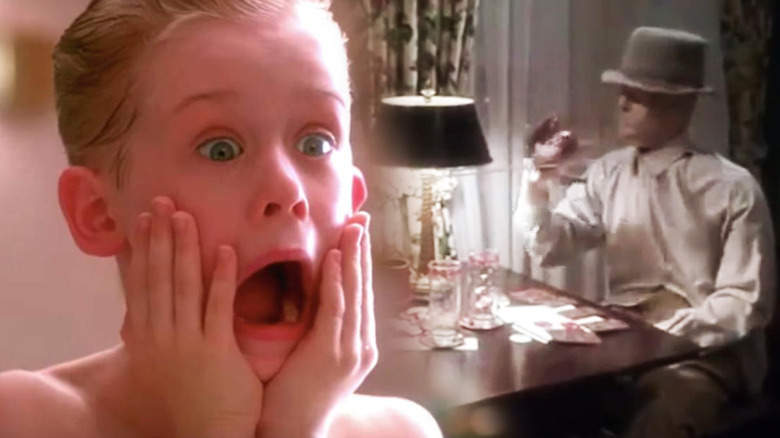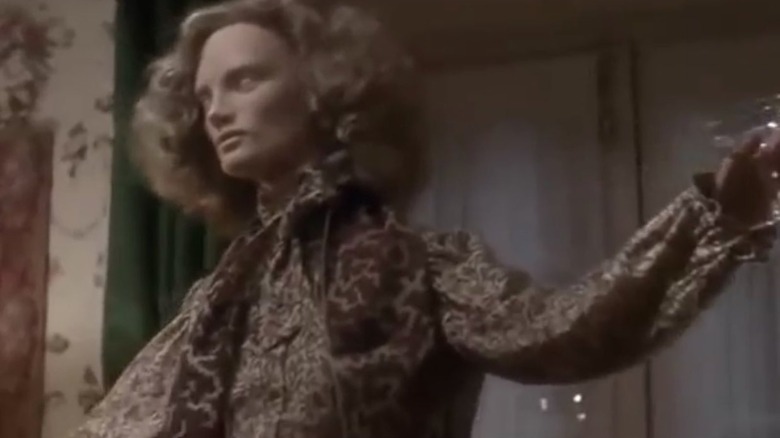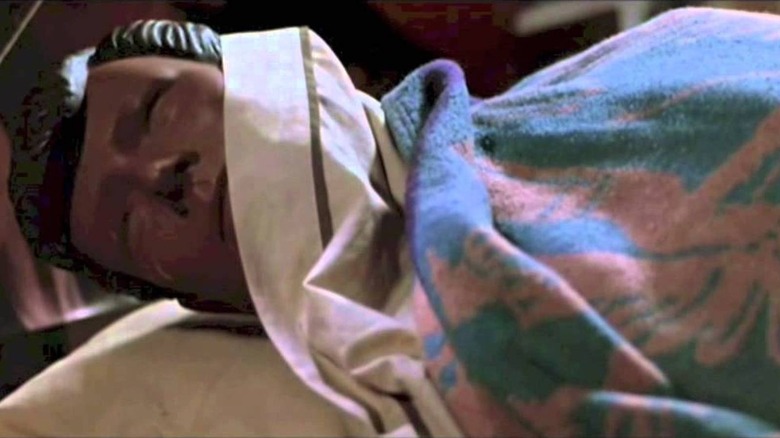How All Those Mannequins Got Into Home Alone
Kevin McCallister pulls off some impressive stunts to dupe two robbers in "Home Alone." He litters his picturesque Georgian house with boobytraps that encase the "wet bandits" in goo and goose feathers. He ziplines across his backyard by crafting a system of old bicycle handles over a rope. Most maniacally, he tortures not only Harry and Marv using the sounds of a violent noir film, but terrorizes an innocent pizza delivery boy as well.
In a genius move that tricks the criminals into thinking that he's not home alone, Kevin creates what looks like a rocking Christmas party using a group of old mannequins and one locomotive-powered Michael Jordan. Just how all those mannequins made it into the McCallister household wasn't another plan concocted by the 8-year-old wunderkind but planted in the original script.
Mannequins were always part of writer and director John Hughes' concept for "Home Alone," though not in the way it would pan out. In an interview with Hunker, the film's set decorator Eve Cauley described Hughes' initial vision:
"In the original script, the mannequins were part of a scene where they came alive and scared Kevin when he went down into the basement. Eventually, that scene was eliminated ... It was about [creating] the kinds of shapes that might make a little kid nervous while they're down there."
Don't be a dummy
In the final cut, Kevin's fear of the basement is personified by a menacing furnace which comes alive not by changing shape but by bearing its iron "teeth" and laughing maniacally. Cauley still used her mannequins, albeit to decorate the master bedroom to give the audience the idea that Mrs. McCallister might like to sew. The decision to leave the mannequins as inanimate objects and tools of Kevin's joy, rather than his fears, was a genius move on Hughes' part. The "Rockin' Around the Christmas Tree" sequence is one of the most memorable scenes of the film and helps solidify Kevin's cleverness so that the Rube Goldberg antics he uses to ward off the robbers later in the movie seem more plausible.
"Home Alone" wasn't the first time Hughes used this trick — the director seemed to have somewhat of an obsession with dummies. Four years before "Home Alone," Hughes' titular truant in "Ferris Bueller's Day Off" employs mannequins to deceive his loving parents. Just as his mother goes to check on him, a homemade contraption fashioned from string and a basketball trophy rolls over a mannequin and switches on a stereo with pre-recorded snores. It's likely the same mannequin seen earlier in the film that sports the trench coat Ferris later wears to pick up Sloane. Much like "Home Alone," Hughes shows glimpses of these dummies, in both their static and "living" form, earlier in the film so that their appearance doesn't seem to come out of nowhere when his protagonist must deploy them to get out of trouble.
Mannequin piece
The choice to use the mannequins during Kevin's raging house party and Ferris Bueller's bedroom harkens back to earlier uses of the dummies in old Hollywood. In "The Funny Parts: A History of Film Comedy Routines and Gags," author Anthony Balducci looks back on mannequins who served as part of comedic duos. The classic 1928 silent film, "Speedy," starring Harold Lloyd, features an ingenious apparatus that allows Lloyd to control the mannequin's arm and make it salute. Both 1926's "Don't Be a Dummy" and 1930's "Ladies Last" use Kevin's trick of sitting mannequins close to a window so their shadows look like real people.
As Balducci notes, the silent movie-era gag was too good just to repeat in his first "Home Alone" film. He had to do it again in the sequel:
"The popularity of the scene motivated Hughes to devise a variation of the routine in a sequel: Home Alone 2: Lost in New York (1992). This time, a Bozo, the Clown blow-up doll set up behind a curtain in a shower creates the illusion of a man taking a shower."
Imagining Kevin hastily setting up a Bozo the Clown in the shower of the Plaza Hotel is in fact an entirely believable scenario in real life. Bozo the Clown, an invention of Chicago's own WGN, was (and still is) an iconic figure in the city that Kevin would have likely watched. Kevin's hijinks throughout the two "Home Alone" films are wildly entertaining, but one can tell that Hughes put thought into every detail, including whether they could be executed by a kid. When it came to choreographing those mannequins, Hughes was no dummy.


